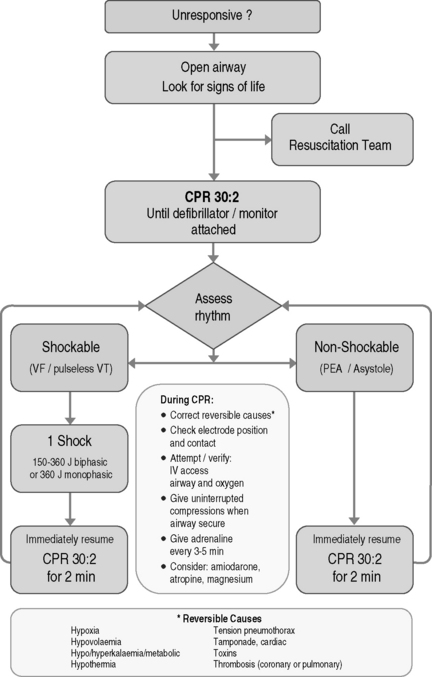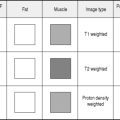Chapter 19 Medical emergencies
Medical emergencies occurring in the radiology department may be due to:
The basic principles are summarized in the ABC of resuscitating the acutely ill patient:
These early interventions should proceed in parallel with diagnosis and definitive treatment of the underlying cause. If cardiac arrest is suspected, the adult advanced life support algorithm in Figure 19.1 should be followed.

Figure 19.1 Adult Advanced Life Support Algorithm.
Reproduced by kind permission of the Resuscitation Council (UK).
RESPIRATORY EMERGENCIES
LARYNGOSPASM
BRONCHOSPASM
This is constriction of bronchial airways by increased smooth muscle tone leading to small-airway obstruction. Risk factors are pre-existing asthma, airway irritation, histamine release and smoking. The signs include:
CARDIOVASCULAR EMERGENCIES
In all cases it is essential to call for urgent anaesthetic assistance if the medical emergency event is not immediately reversed.
ADVERSE DRUG REACTIONS
CONTRAST MEDIA REACTION
This is also discussed in detail in Chapter 2. Suggested management is as follows:
However, it should be noted that skin or mucosal changes alone do not indicate anaphylactic reaction and that these changes are subtle or absent in up to 20% of anaphylactic reactions. The recommended management plan for anaphylaxis is the UK Resuscitation Council algorithm in Figure 19.2
LOCAL ANAESTHETIC TOXICITY
Accidental i.v. injection of local anaesthetic or systemic absorption can result in toxicity due to membrane effects on the heart and central nervous system:





